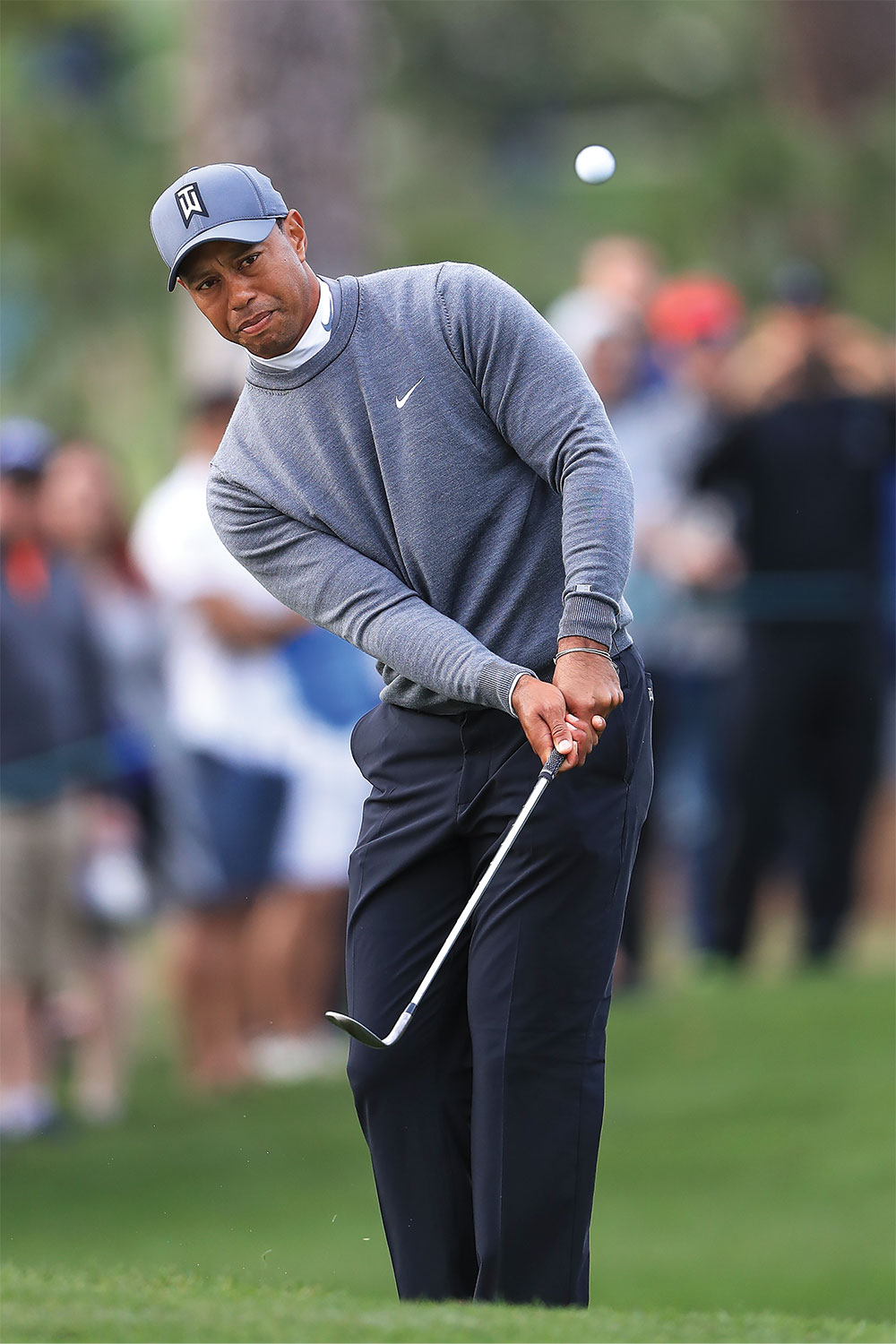Stan Utley
“When Tiger got in trouble with his chipping, he tended to let the handle move too wide in the backswing. When that happens, the head isn’t really swinging; you’re moving the whole stick together. Then if you accelerate the grip to start the downswing, you bring the grip through impact first, which ruins the engineering of the club. In the swings I see now, the club is setting earlier and releasing earlier, and he’s using the bounce. When you use the bounce, the lies don’t become scary. You’re hitting the turf with the back of the wedge and skidding. You want to land the plane shallow and on the back wheels.”

Randy Smith
“It’s absolutely amazing to me what he’s done to recover – a total transformation. You can call it release point, rust or whatever, but there was something yippy going on. He was literally playing away from his wedges. But as the greatest player in the world might do, he figured out something different – a different feel, a different way to approach it, a slight grip change. Anything to feel less action in his hands. That’s fine in practice, but he’s now doing great on the real stage. His short game is back. He still has the yips. In the back of his head, they’re still there. But for now, the change is a warm blanket.”
Hank Haney
“Everybody wanted to see what kind of swing speed Tiger was going to have when he came back from the spinal-fusion surgery, but I really believed the obvious short-game issues he had would prevent him from coming back in any real way if he couldn’t figure them out. He’s obviously found something in a technique change that’s been working – to a degree – and that’s great. You still see some of those strange shots every once in a while. That’s his reality now. You can have some good stretches, but when you have the yips, they’re in there. It’s just a matter of how you try to manage them.”
David Leadbetter
“Tiger didn’t have the chipping yips because of a mental issue. It was physical. He had the shaft leaning too far forward, and the leading edge was digging. You can get away with that on certain types of grass, but many times the grass would grab the clubhead and cause it to stub. If you don’t correct that, you could end up with a full-blown case of the mental chipping yips, but he corrected the issue. His right hand is much more involved in the shot. The club releases and glides along the grass. It’s a much more effective way to chip. And with his hand-eye co-ordination, he can be as great as ever that way.”
Mike Adams
“Tiger had bad chipping fundamentals that exposed the leading edge instead of the bounce – not the yips. He took it back too wide, which shut the face, and he dragged the handle through the shot. That created too much shaft lean – something he had been trying to do in his full swing – and it leaked into his short game. I can’t think of another player who had that happen like that, but who else has been as willing to change swings? Now he’s setting the club sooner, letting his right arm fold, releasing it better and using the bounce. Right-hand-only drills helped him a lot. He once again is an awesome wedge player.”
Dave Stockton
“Tiger has always used his right hand a lot more on those shots than I do, as opposed to letting the left hand control the action. He uses his hands as a unit, but when that right hand takes over, that’s when the club starts digging. I was surprised to see that become his problem because he was always so great at those shots. When you struggle, it can get difficult fast because you start trying too hard to fix the problem and then you lose your feel. But now, he seems to be swinging much more freely. He’s got it back in the groove. Maybe what he needed was some time to work on his game.”
James Sieckmann
“Imagine if you’ve been amazing at something your whole life, and you never had to think about how to do it. Then all of a sudden, when you tried to do it, it didn’t work. Tiger was thinking the same things he always had, but he didn’t get the same result. He was confused. His setup had gotten so different, with his head behind the ball and his shoulders closed. He was in a position where he couldn’t hit the ball first. A lot of people think he had the yips. He didn’t. Tiger had a bad motor pattern. And when he found the right pattern again, it came back quickly – and so did his confidence.”
